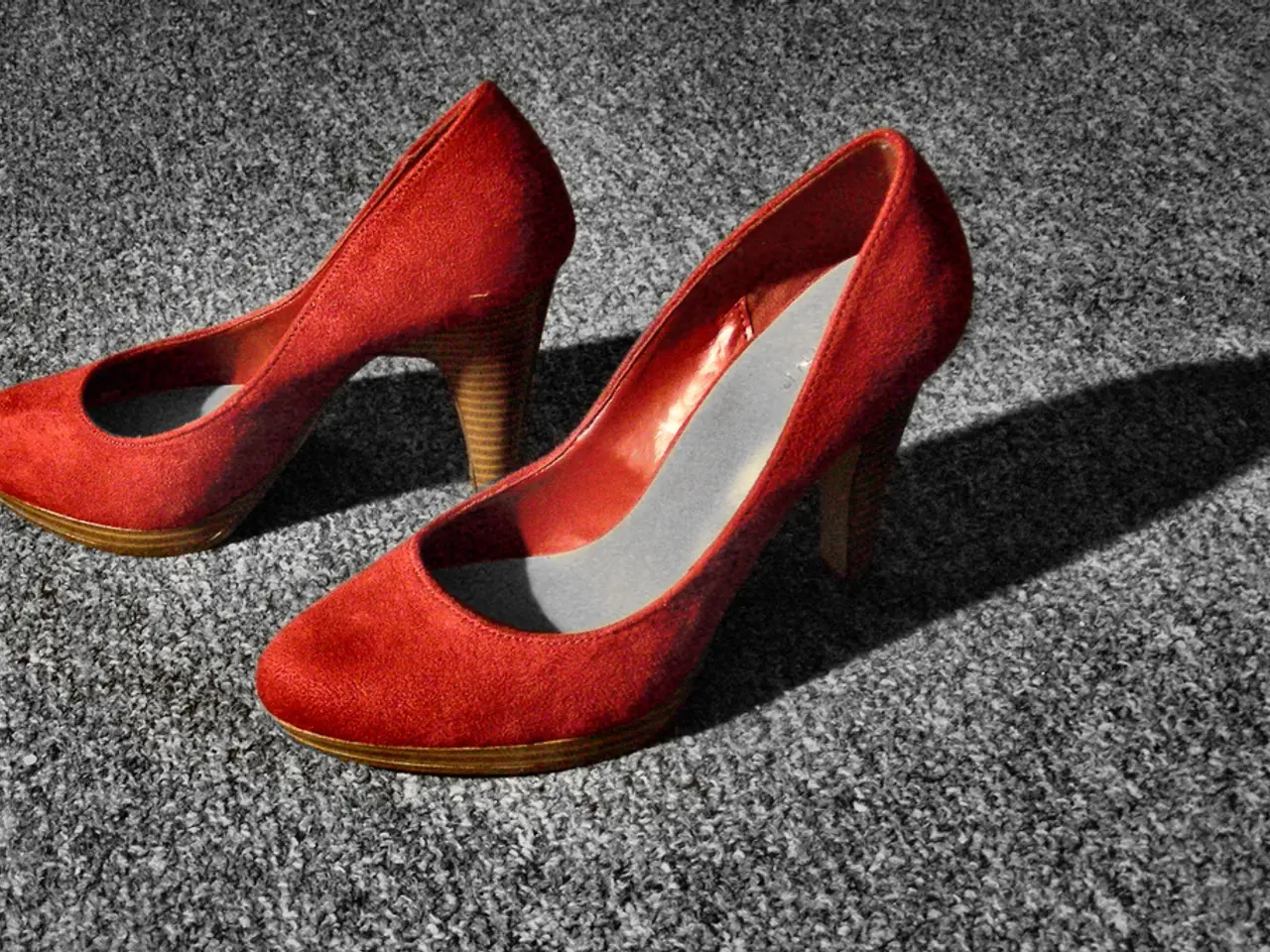Addressing Issues of Foot Health in Dementia Sufferers
In the world of dementia care, the significance of proper footwear and foot care cannot be overstated. Dementia, with its associated cognitive decline, often leads to limited mobility, balance issues, and poor foot health.
The Risks of Inappropriate Footwear
Improper footwear contributes to foot problems in dementia patients primarily by increasing risks of slips, falls, foot pain, discomfort, balance issues, blisters, and sores. Dementia impairs hazard recognition, spatial awareness, and decision-making, which exacerbates these risks when inappropriate shoes are worn[1].
Poor support and fit can lead to foot pain and discomfort, reducing mobility. Inadequate grip and design increase fall risk from slips. Incorrect footwear can cause blisters or sores, risking infection. Excessive cushioning or poor sensory feedback from shoes may decrease foot sensory acuity, affecting balance and posture, which is critical for preventing falls in vulnerable populations, including those with dementia[3][5].
The Solution: Appropriate Footwear and Care
Choosing appropriate footwear is crucial. Look for shoes specifically designed for older adults with dementia, which emphasize safety, security, ease of use, support, and good grip. Examples include Silverts Alzheimer’s Shoes, Skechers GO Walk, New Balance Classics, and Propet TravelActiv Sneakers[1]. Shoes should have a firm but comfortable sole for balance and foot sensory input without excessive cushioning that dulls sensory feedback[3][5]. Ensure a proper fit to prevent blisters and sores[1].
Regular foot care and maintenance are also essential. Inspect feet regularly for blisters, sores, or pressure points since dementia patients might not report discomfort. Maintain hygiene and moisturize to prevent skin breakdown.
Supportive Interventions
Physical therapy or gentle exercises can improve foot strength, flexibility, and balance, reducing the risk of falls[4]. Walking and low-impact aerobic exercises (like swimming) help maintain circulation and foot muscle strength. For foot pain or peripheral neuropathy symptoms, consider supportive footwear with cushioning and grip, plus therapies like massage or prescribed exercises[4][2]. Modify activity to avoid overuse but encourage regular movement. Use ice or heat therapy if acute pain or chronic muscle tension occurs[2].
Coordinating Care
The primary care physician can coordinate overall care, addressing general health concerns impacting foot problems. A podiatrist can address specific issues like ingrown toenails, ulcers, and recommend suitable footwear. When sitting, elevate the feet slightly to reduce swelling.
In a study by researchers from the Universidade da Coruña, it was found that 89.04% of older adults with probable, mild to moderate Alzheimer's disease had some kind of foot problem[6]. A gentle massage of the feet using a non-irritating lotion enhances circulation and provides a soothing effect. Reduced sensation due to dementia can make it challenging for patients to notice foot issues, so caregivers should inspect the patient's feet regularly for signs of swelling, sores, or ingrown toenails.
Inappropriate footwear can exacerbate foot problems, leading to ingrown toenails, ulcers, and worsening balance issues. Well-fitted shoes reduce the risk of injuries and improve overall mobility. Opt for shoes that are comfortable, provide proper support, and have a non-slip sole.
References: [1] Alzheimer's Society. (2019). Foot care for people with dementia. Retrieved from https://www.alzheimers.org.uk/about-dementia/symptoms-and-diagnosis/symptoms-of-dementia/foot-care-for-people-with-dementia [2] National Institute on Aging. (2019). Foot problems in older adults. Retrieved from https://www.nia.nih.gov/health/foot-problems-older-adults [3] American Podiatric Medical Association. (n.d.). Footwear for older adults. Retrieved from https://www.apma.org/Learn/FootHealth.cfm?ID=276 [4] Mayo Clinic. (2019). Foot care for older adults. Retrieved from https://www.mayoclinic.org/healthy-lifestyle/healthy-aging/in-depth/foot-care/art-20045853 [5] National Institute on Aging. (2019). Balance and falls prevention. Retrieved from https://www.nia.nih.gov/health/balance-and-falls-prevention [6] Gomez-Martinez, C., et al. (2017). Foot problems in older adults with Alzheimer's disease. Journal of Foot and Ankle Research, 10(1), 1-7. doi: 10.1186/s13047-017-0231-9
- Science and health-and-wellness have recognized the importance of proper footwear in dementia care, as it can help manage risks of slips, falls, and foot health issues.
- Medicare, nutrition, and skin-care are integral components of overall health, yet they also play a supportive role in maintaining good foot health, as malnutrition and poor skin conditions may exacerbate foot problems in dementia patients.
- Therapies and treatments, such as physical therapy, gentle exercises, massage, and prescribed exercises, can help improve foot strength, flexibility, balance, and alleviate foot pain for dementia patients.
- A multi-disciplinary approach to dementia care is essential, with primary care physicians coordinating overall health concerns, podiatrists addressing specific foot issues, and caregivers regularly inspecting the patient's feet for early detection and prevention of foot problems.




